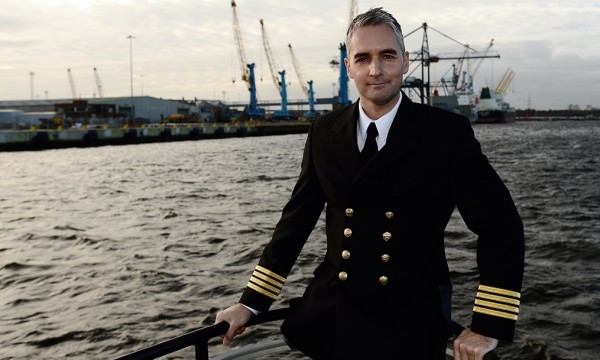
Blog
14th May 2019
Counting the cost — in carbon
Steven Clapperton, Director of Health and Safety, Environment and Marine, shares his thoughts on the Port's journey towards sustainability.
What is the least polluting way to transport goods? By sea! We can never be complacent or smug but the shipping and ports industry does have strong foundations in the drive for sustainability.
Our role as a port is to find ever smarter ways to reduce our own carbon footprint while encouraging and supporting sustainable logistics choices based on shipping in the first place.
The Port of Tyne’s unique Carbon Saving Calculator brings these two strands together. You can find it on our website: input the details of your container’s journey from a southern port, and our Calculator will measure up the carbon savings to be made by using our regular feeder shipping services, versus the same trip by rail or road. It will even give you the equivalent carbon saving in terms of heating and lighting a house or watching TV.
Maritime 2050, the DfT’s long-term strategy for the sector, sets out some ambitious environmental targets and the Port of Tyne is determined to be a leader in this.
Within the period of our own five-year strategic plan, we are committed to reducing our CO2 footprint by 5%, against a 2017 baseline. That is more ambitious than it might sound, given that we anticipate very significant growth in activity between now and 2022.
In common with all major English ports, we are putting together our draft Air Quality strategy to meet DfT requirements. This raises some challenging questions, given that the port stretches along a 17-mile ‘corridor’ taking in four riparian councils.
Of course, we can absolutely control our own direct activity. As far as councils and other river users are concerned, we must aim to steer and influence. Looking ahead, there may be room for a financial incentive in the form of a ‘green tariff’ for cleaner shipping and operations.
Meanwhile, we are focusing on specifics. This year we are investing almost £1m in an LED lighting project. Switching to LED will cut our electricity consumption by 75% and reduce our carbon footprint accordingly. But this is also a longer step – by freeing up power capacity, we can move away from diesel and towards the electrification of cranes, reachstackers, wood pellet hoppers and other cargo handling equipment. Allied to this, we are developing procurement standards which will prioritise energy management when new equipment is chosen.
Longer term we are asking ourselves: what would it take to reduce our carbon footprint by 50% by 2050? As well as moving increasingly towards renewable power and smart/responsive lighting, we will ensure that any development allows for future installation of onshore power supplies, so that vessels can plug in and switch off their engines. We’re looking to develop sustainable travel systems to support economic growth while reducing CO2 emissions, we aim to use more electric vehicles, and we want to create green travel plans for employees.
Cost is no longer just about money; we must measure cost in carbon too.




